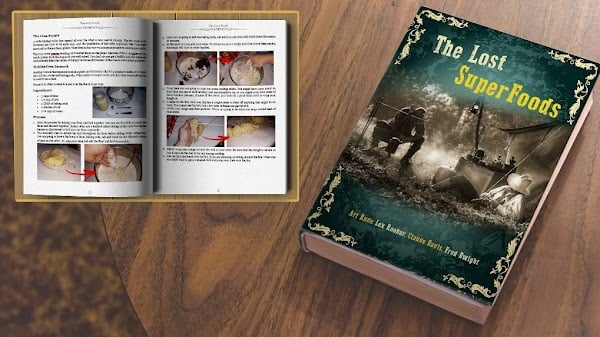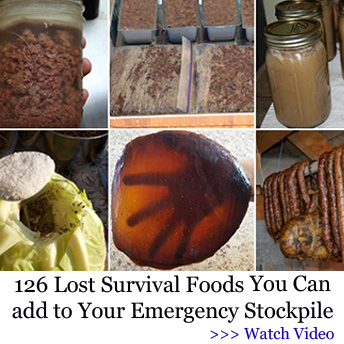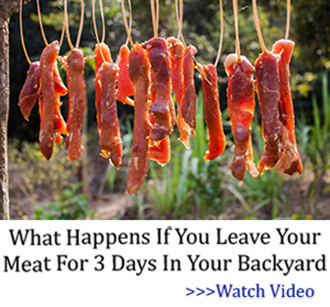Foraging and Wildcrafting 101: A Beginner's Guide to Harvesting Wild Edibles

I. Introduction
Foraging and wildcrafting are ancient practices of harvesting wild edibles from nature, providing sustenance, and connecting with the natural world. In this beginner's guide, we will explore the basics of foraging and wildcrafting, including the equipment needed, ethical practices, and techniques for harvesting wild edibles.
II. Getting Started with Foraging
Foraging is the act of finding, collecting, and consuming wild edibles from their natural habitat. It is important to approach foraging with respect for nature and its delicate balance. Here are the key steps to get started with foraging:
- Define Foraging: Foraging is the act of gathering wild edibles, such as fruits, nuts, greens, and roots, from their natural environment.
- Equip Yourself: Before venturing out into the wild, you'll need some basic equipment. This includes a sturdy pair of hiking boots, appropriate clothing, a field guide or a reliable smartphone app for plant identification, and a collection bag or basket for gathering the wild edibles.
- Know the Basics: Learn about the principles of foraging, including the importance of proper plant identification, sustainable harvesting practices, and respect for private property and local regulations.
- Find and Identify Wild Edibles: Research the types of wild edibles that are commonly found in your area and learn how to identify them using field guides, online resources, or by attending local foraging workshops. Start with easy-to-identify species, such as dandelions, blackberries, or wild onions, before moving on to more advanced foraging.
- Ethical Foraging Practices: Always follow ethical foraging practices, such as taking only what you need, avoiding overharvesting, leaving enough for the wildlife and other foragers, and not disturbing the natural habitat. Respect the natural balance of ecosystems and do not harm endangered or protected species.
III. Exploring Wildcrafting
Wildcrafting is the practice of harvesting non-food materials, such as herbs, flowers, mushrooms, and other plant parts, for medicinal, culinary, or artisanal purposes. Here's what you need to know to get started with wildcrafting:
- Define Wildcrafting: Wildcrafting is the sustainable harvesting of non-food materials from wild plants for various purposes, such as medicinal, culinary, or artisanal use.
- Understand the Significance: Wildcrafting is not only about harvesting plant materials, but also about understanding and appreciating the interconnectedness of plants, ecosystems, and human health. It promotes sustainability, self-sufficiency, and a deeper connection with nature.
- Differentiate from Foraging: While foraging is focused on harvesting wild edibles for food, wildcrafting involves gathering non-food materials, such as herbs, flowers, mushrooms, and other plant parts, for various purposes.
- Learn Sustainable Techniques: Learn how to harvest plant materials sustainably, including proper harvesting methods, timing, and quantities. Avoid damaging or overharvesting plant populations, and always follow ethical wildcrafting practices to protect the environment and ensure the regrowth of plants.
- Utilize Wildcrafting Materials: Discover the diverse uses of wildcrafting materials, such as making herbal teas, creating natural dyes, crafting natural beauty products, and using them for culinary purposes. Experiment with different plant materials and explore their unique properties and benefits.
IV. Harvesting Wild Edibles
Harvesting wild edibles requires careful consideration of plant identification, safety precautions, and sustainable practices. Here are some essential tips for harvesting wild edibles safely and sustainably:
- Proper Plant Identification: Always ensure that you can positively identify the plant species you are harvesting. Use a reliable field guide, online resources, or seek guidance from experienced foragers or local experts. Avoid consuming any plant unless you are 100% certain of its identity, as some wild plants can be toxic or harmful.
- Safety Precautions: Take necessary safety precautions while harvesting wild edibles. Wear appropriate clothing, including gloves, to protect yourself from thorns, prickles, or poisonous plants. Avoid areas that may be contaminated with pesticides, pollutants, or harmful substances. Be mindful of wildlife, insects, and environmental hazards while foraging.
- Sustainable Harvesting: Practice sustainable harvesting techniques to ensure the long-term health and regeneration of wild plant populations. Take only what you need, and avoid overharvesting. Avoid harvesting rare, endangered, or protected plant species. Leave some portion of the plant behind for reseeding and for wildlife habitat.
- Respect for Nature: Show respect for nature and its delicate balance while harvesting wild edibles. Do not damage other plants or habitats in the process. Avoid trampling on delicate plants, disturbing wildlife, or leaving behind any litter or waste. Leave the environment as you found it, or even better.
V. Tips for Successful Foraging and Wildcrafting
Here are some additional tips to make your foraging and wildcrafting endeavors more successful:
- Start with Easy-to-Identify Plants: As a beginner, it's best to start with easy-to-identify plants that have few or no toxic look-alikes. Examples include dandelions, blackberries, stinging nettles, or wild garlic. Gain confidence in identifying these species before moving on to more advanced foraging.
- Research Local Regulations: Be aware of local regulations, restrictions, or permits related to foraging and wildcrafting in your area. Some regions may have specific rules or protected areas where foraging is prohibited or limited. Respect these regulations and forage only in allowed areas.
- Join a Foraging or Wildcrafting Group: Joining a local foraging or wildcrafting group or attending workshops can be a great way to learn from experienced foragers, gain valuable insights, and discover new foraging spots. It's also an opportunity to connect with like-minded individuals who share your passion for wild edibles and nature.
- Keep Learning: Continuously educate yourself about foraging and wildcrafting by reading books, attending workshops, watching online tutorials, or joining forums and communities dedicated to wild edibles. Keep improving your plant identification skills, learning about new species, and staying updated with best practices.
VI. Conclusion
Foraging and wildcrafting are ancient practices that offer a rewarding way to connect with nature, learn about plant diversity, and harvest wild edibles sustainably. By following proper plant identification, safety precautions, and sustainable harvesting practices, you can enjoy the benefits of foraging and wildcrafting while respecting the environment and its natural balance.
Remember to start with easy-to-identify plants, research local regulations, and join a foraging or wildcrafting group for guidance and support. With practice and experience, you can develop a deep connection with the natural world and enjoy the bountiful harvest of wild edibles that nature has to offer.
So, lace up your hiking boots, grab your field guide or smartphone app, and embark on the exciting journey of foraging and wildcrafting to experience the joy of harvesting wild edibles and living in harmony with nature.

